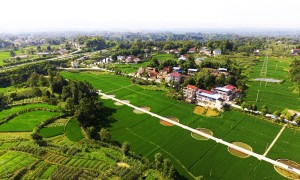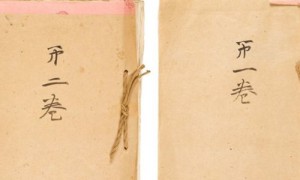Entry overview: Lace is an imported product. Mesh weave, first hand-knitted by crochet. Europeans and Americans use it a lot in women's clothing, especially evening dresses and wedding dresses. In the 18th century, European courts and noble men also used a lot of cuffs, collars and socks.

Basic Information
vocabulary name lace
Transliteration of the word lace, English original meaning: noun: lace; belt, shoelace;
Verbs: tie, tie. The transliterated word refers specifically to lace.
house vocabulary
Refers to a large number of belt-like decorations on women's clothes in animation (AV), which derives a group of "lace control".
Overview
The imperial style women's clothing of the early 19th century, the romantic fashion that followed, or the later Kronolin and Basil women's clothing, was no less than the previous century in the use of lace. . Art Nouveau fashion in the early 20th century went even further, with "waterfall" flame lace on S-shaped dresses. For more than 200 years, the demand for lace in Europe and later North America has been so great that many underdeveloped countries in the world have produced handmade lace for them, including China. The Xujiahui area in Shanghai used to be an important processing area for hollow lace in the 19th and early 20th centuries, where Catholic families were almost all lace processing workshops.
In the various stages after the 20th century, the above-mentioned "golden period of lace" has not been encountered again. Although lace still occupies an important place in women's clothing, evening wear or wedding dress. In China, since the 1980s, the long-lost lace has quietly returned with fashion. But the younger generation prefers to call them lace velvet or lace — to them, the imprecise Hong Kong and Taiwanese transliteration seems to have an irresistible charm. By the end of the 20th century, lace was suddenly a star on the fashion scene. With the popularity of "transparent look" and "see through look", lace itself has become as fashionable as its translated name.
Evolution history
The flower-shaped structure of lace was not previously obtained by knitting or weaving, but by twisting the yarn. In Europe in the 16th and 17th centuries, weaving lace from thread cores became a source of income for individual craftsmen and a means of passing time for noble women. The demand for lace in the society at that time was so great that the work of lace workers was very tiring. They often worked in moldy basements, and the light was so weak that only spinning wheels could be seen.
Lace manufacturing in England entered the industrial age with the invention of the lace loom (patented in 1809) by John Heathcoat, a machine that produced very fine and regular hexagonal lace bottoms. Craftsmen only need to weave patterns on the net, which is usually made of silk. A few years later, John Leavers invented a machine that used the principle of French jacquard looms to produce lace graphics and lace nets, and it also established the lace tradition in Nottingham, England. Leavers' machines are complex, made up of 40,000 parts and 50,000 types of wire, that need to work from different angles.
Today some very high quality lace companies still use Leavers machines, Karl Mayer introduced warp knitting machines such as Jacquardtronic and Textronic to produce lace like Leavers lace, but more economical, finer and lighter. Synthetic yarns such as rayon, nylon, polyester and spandex also change the properties of lace, however, the yarn used to produce lace must be of very good quality, with a higher twist count than yarn used for knitting or weaving.
Nottingham Trent University held an event titled "Lace: Showcasing 75,000 types of lace from the school's collection. These lace archives have inspired textile fashion and decorative arts students and teachers, and we hope to design more new works. Blending lace's past with present-day art and design. These new pieces will be showcased at SPINEXPO under the title "The Journey of Lace" to expect more designers, buyers and manufacturers to use lace in their products Works on display include new lace constructions, embroidered lace, and prints and patterns of lace evolution.
Today, lace has become a fashion in everyday life. It is produced in Asia and the West. It is an indispensable part of intimate clothing, and can also be used to decorate the home. It is also the darling of runway and street fashion.
The composition of lace
Lace uses nylon, polyester, cotton and rayon as the main raw materials. If supplemented with spandex or elastic yarn, elasticity can be obtained.
Nylon (or polyester) + spandex: common elastic lace
Nylon + polyester + (spandex): It can be made into two-color lace, which is made by dyeing different colors of nylon and polyester.
All polyester (or all nylon): It can be divided into monofilament and filament. Monofilament is mostly used for wedding dresses; filament can imitate the effect of cotton.
Nylon (polyester) + cotton: It can be made into a different color effect at the bottom of the flower.
cotton
Classification
According to the major categories of technology:
Tricot Lace: Lace made by knitting the warp knitting process.
Embroidered Lace: Lace made through the embroidery process.
Other lace: lace processed by other processes, such as composite lace, bronzing lace, etc.







